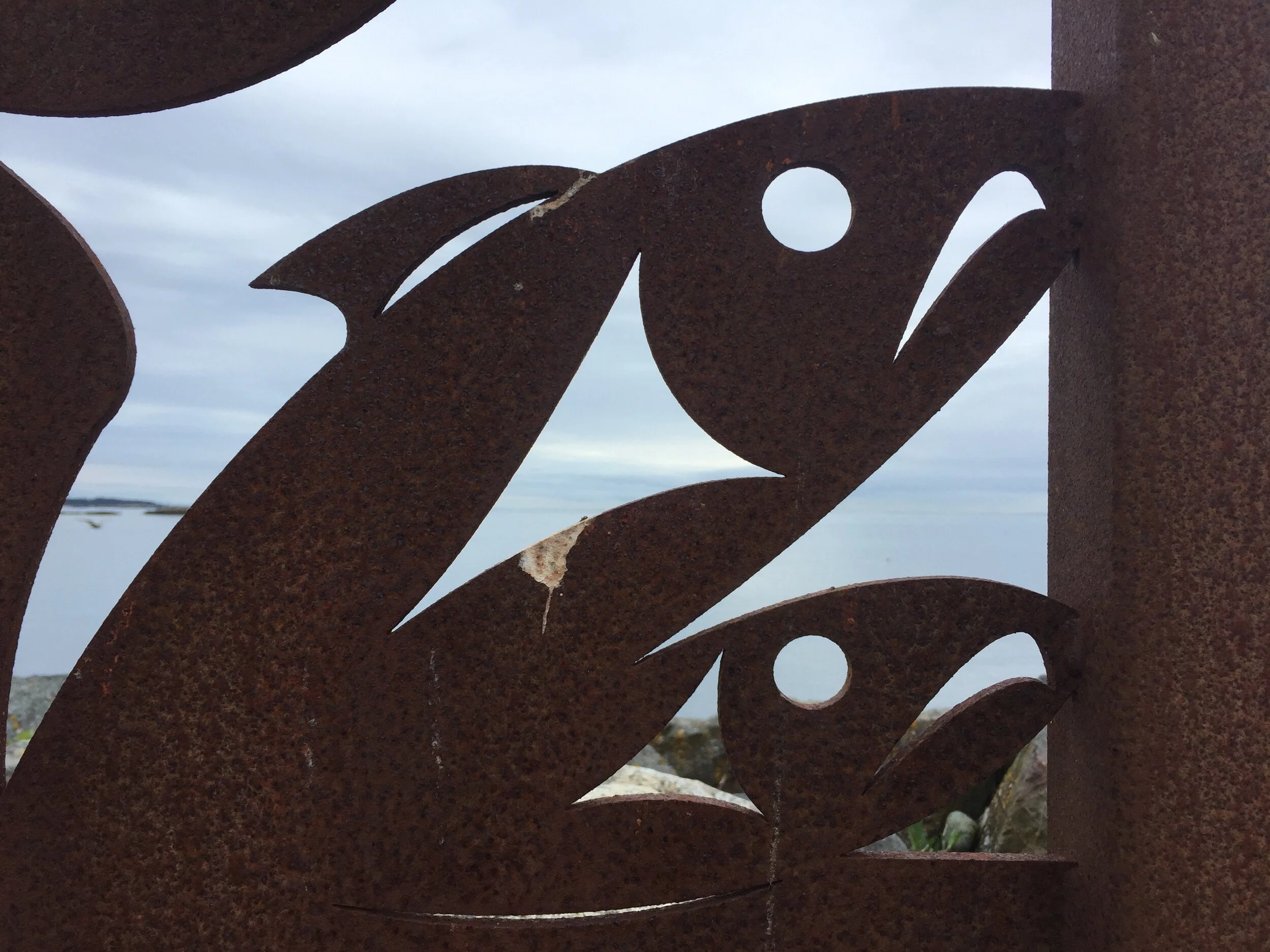
“We need people like yourself, that are going to help them move them along and to where it needs to be.
We need people that ask those questions, those interviews, and present that.”
— J’SINTEN Dr. John Elliott
So, you want to do a Reconcili-Action Project?
Congratulations! This is a great project to put your energy into.
To truly create a meaningful reconciliation project, how might your project benefit the Indigenous community or people you are working with?
You are asking for their time. What will they get out of it? This is an opportunity to not only conduct an interview, but also to establish meaningful connections with members of the Indigenous community.
Research
Research the Indigenous territory, bands and villages in your area.
Research and write short biographies on Indigenous Elders, artists, or people you might want to interview.
Research on conducting oral history interviews.
Learn about the Indigenous language of your territory and about local language revitalization initiatives and champions.
Look into protocols when interacting with Indigenous Elders.
Reflect on and write about the potential benefits your project can have for the Indigenous community or people you would like to work with.
You can find tons of helpful resources under our Resources!
2. Next, prepare a report to share with your peers. Include a bibliography of the resources you used. Share it and get feedback.
3. Building Relationships
Identify who you would like to interview. If you don’t know who you want to interview, identify a topic you would like to interview someone about. Ask your teacher, your parents or others if they are aware of an Indigenous person who you could talk to about that topic.
Find someone who can introduce you to your prospective interviewee so you don’t have to cold call. Most school districts have an Indigenous Education coordinator that you can try emailing first.
Before the interview, try to meet the person you want to interview.
Start building a relationship with your interviewee. Explain that you want to interview them for a school project towards reconciliation. Why are you doing this? What are you aiming to achieve? Ask if they would be willing to be interviewed.
See the Sample Permission Form for a template you can use!
4. Prepare your interview questions. See Sample Interview Questions and 15 Tips for Oral History Interviews
5. Getting Ready for the Interview
Read up on doing interviews/interview techniques.
Set a date to do the interview.
Have your questions prepared on a piece of a paper. Having a physical copy is preferred over phones.
Plan ahead where you will sit, where your narrator will sit, where you will place the recording device.
Check your technology works: camera, recording device (probably your phone) and a tripod.
6. During the Interview—See Fifteen Tips for Oral History Interviews.
7. After the Interview
As you end the interview, thank the interviewee.
Give them an honorarium or gift. Protocol gifts are a pinch of tobacco or tea wrapped in a red piece of fabric symbolizing a blanket. “The purpose of a gift and/or an honorarium is to acknowledge and show appreciation for the sharing of knowledge and personal time provided by the elder, knowledge keeper or cultural advisor.” (More info here)
8. Creating your video or project from the interview
Review the interview.
Transcribe the interview, noting times against each paragraph. This will make it easier to develop a script and then to find the parts you want to use for your video. Transcribing an interview manually can take a lot of time and effort! Services like Temi make it much easier, and you can transcribe one file for free.
Identify a compelling topic from your interview and research.
Think about how you want to present what you’ve learned. This could be in a variety of formats, like a video, written essay, or a piece of visual art! The possibilities are endless.
Draft an outline/script. Consider a mix of your talking/asking questions, portions of the interview, pictures, and interesting material you found while researching. Make sure any material you plan to use is available for use, or you have or can get copyright permission.***
Review your draft script with someone you think can give you constructive feedback – teacher, parent, classmate, mentor or your interviewee.
Edit and finalize your script/project outline.
Create your project. Remember to include credits.
Review with your interviewee prior to presenting it or handing into your teacher.
*** Copyright permission: If you find a good image online or a historical photograph you want to use, you probably need to approach the holding institution (museum, archives, gallery, artist, photographer, website owner) to ask permission to use the image. Most agencies will give permission for use for a school project. Don’t be shy about asking - it’ll be good practice for future projects! See the Sample Licensing Agreement for a template, or for more information about copyright and licensing, see here.
Need help or inspiration? Take a look at these documents (or check out our Resources page):
Orange Shirt Day Project - Gleneagle Secondary School
Remembrance Day Veterans Project - Gleneagle Secondary School
Being W̱SÁNEĆ: Indigenous Culture and Identity by Lucas Hung




